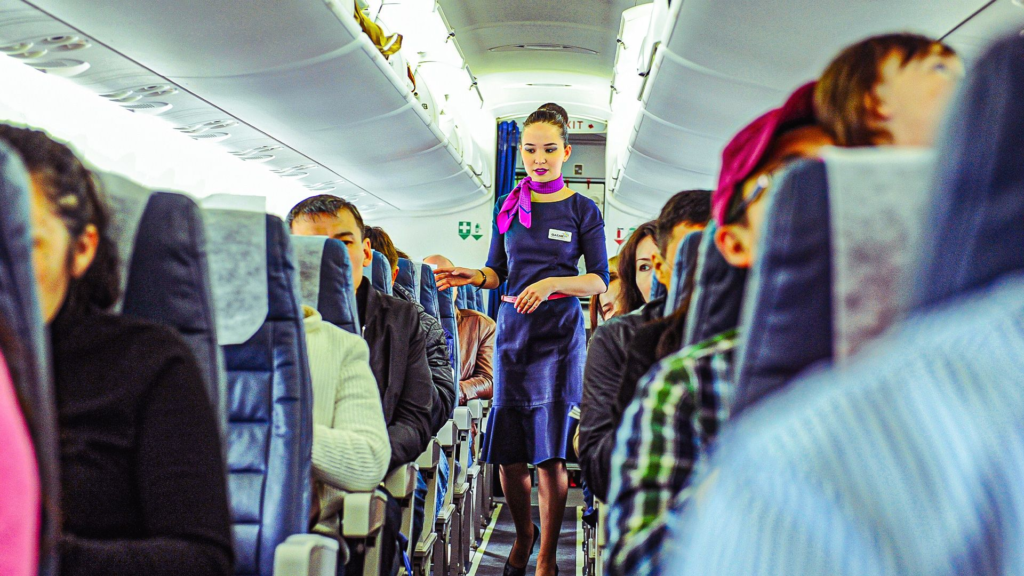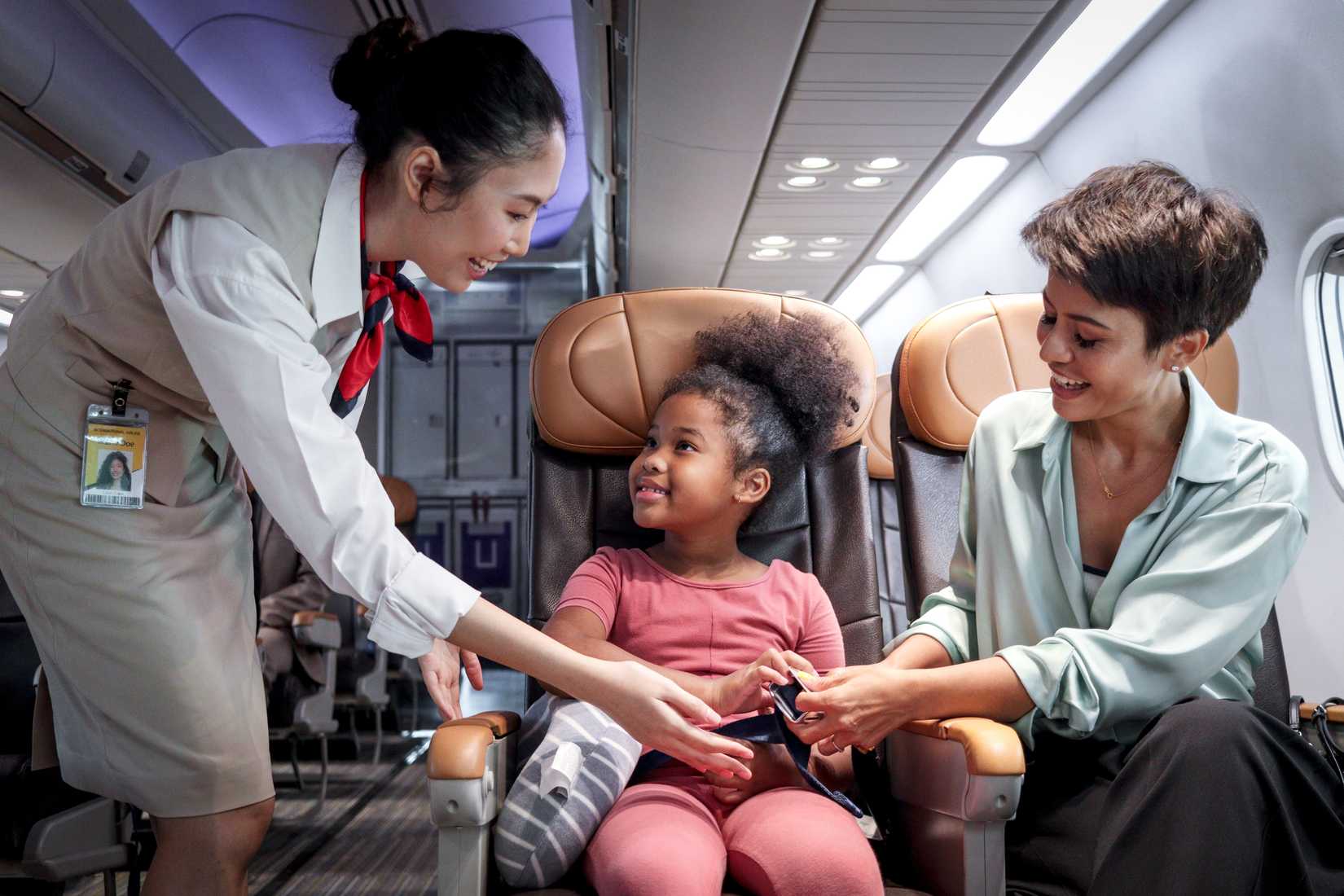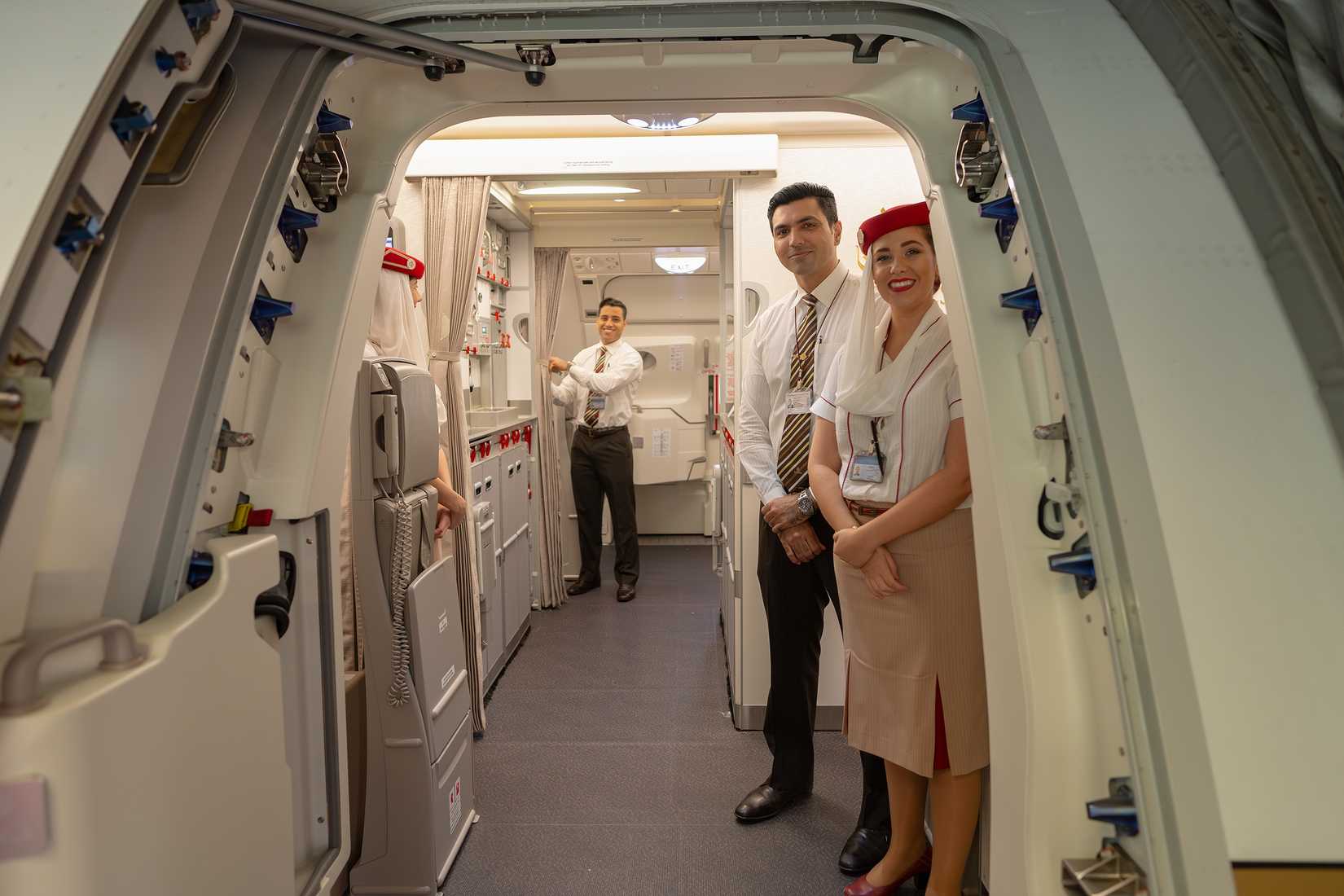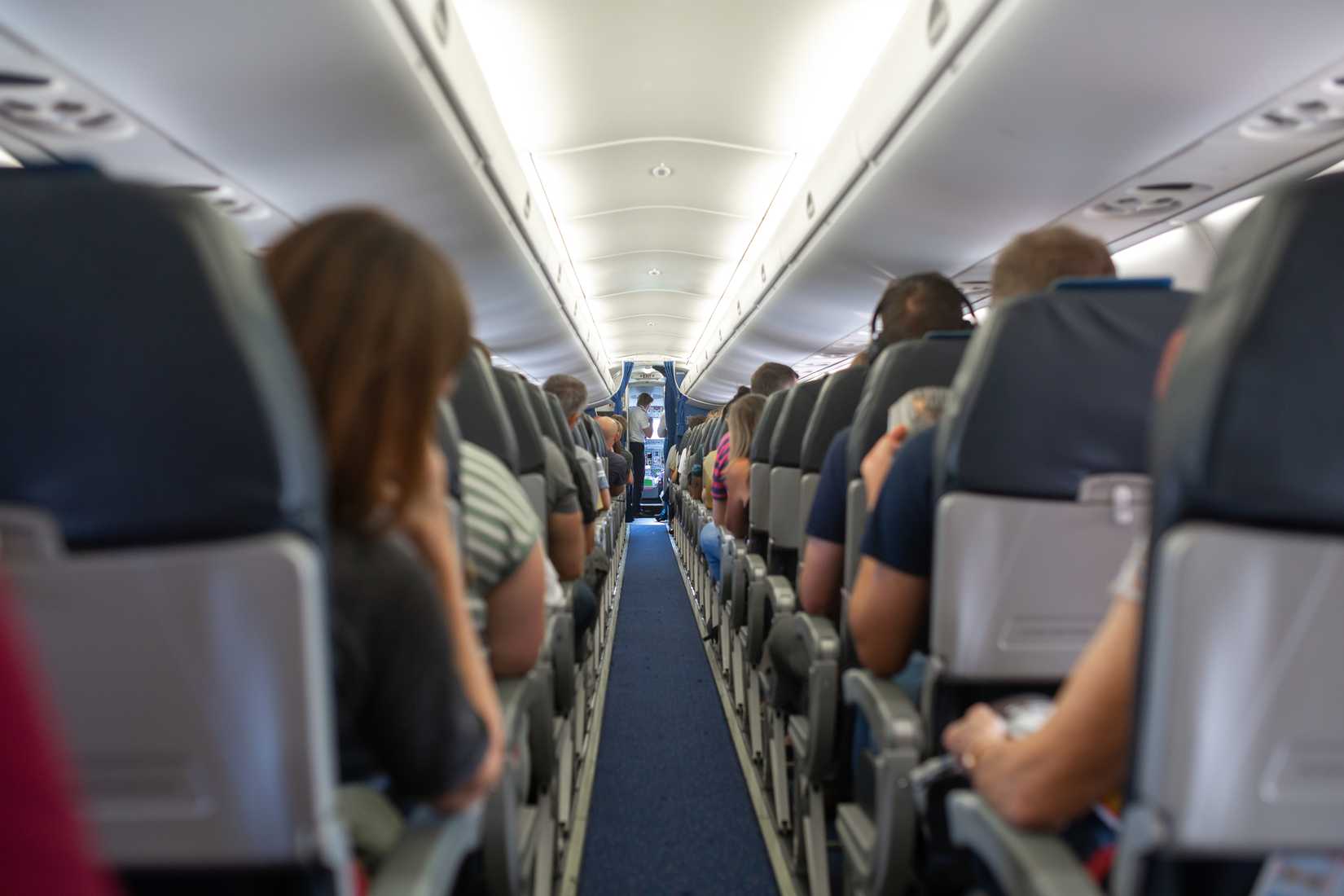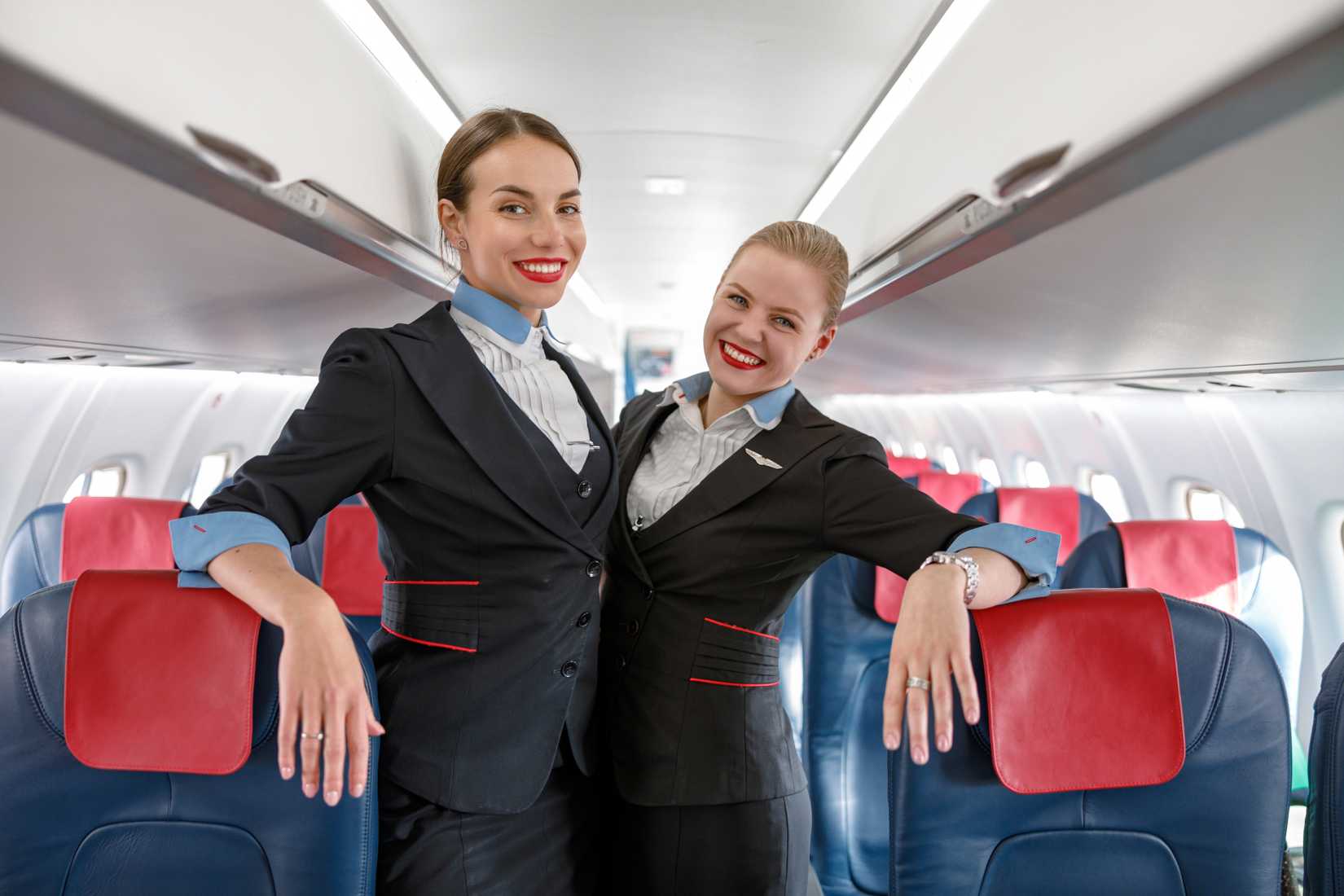When a passenger boards the plane, they will almost always be greeted by smiling flight attendants at the door. They will check your ticket, direct you to your seat, and once in the cabin, even assist with finding space for your bags. However, this is not just being polite and good customer service; there is much more to those few seconds than one might think.
The flight attendants carefully observe each and every passenger during the boarding process. This is because they are looking for anything that might be a threat to safe and efficient flight. They are evaluating passengers for safety and security reasons, but also some things that may surprise you.
Disruptive Passengers
Of course, with incidents of disruptive passengers on the rise, flight attendants have to try and spot potential problem passengers before take-off. During the boarding process, they are assessing passengers who may be drunk or drugged, or seem verbally or physically aggressive or angry. Worse still, if they are trying to cause trouble in any way in the cabin before the aircraft has left the stand, then this is a huge warning sign.
The idea is to stop the problem before it starts and becomes not only an inconvenience to everyone on board, but also threatens the safety of the flight in any way. It is easier to offload a disruptive passenger on the ground than have an incident during the flight and then have to divert the flight to the nearest city to offload them to local security forces. In some cases, the passenger may be restrained by the flight attendants, and that is permissible.
Incidents of disruptive passengers occur somewhere around the world on almost a daily basis, and numbers continue to rise. Authorities like the Federal Aviation Administration (FAA) are responding more to this by fining passengers and having them pay diversion costs of anywhere between $15,000 and $100,000.
They will also likely be banned from flying with the airline again. In 2024, there were over 2,100 cases of disruptive or unruly passengers reported by US airlines, and the Irish Aviation Authority recorded 1,432 ‘events’ compared to 426 the previous year, according to RTE. Meanwhile, Switzerland’s Federal Office of Civil Aviation reported 1,730 cases in the same year.
Passengers Needing Assistance
Flight attendants also look out for anyone who might need special assistance. This could be a Passenger with Reduced Mobility, someone who is elderly, or a passenger with young children. They might require a bit more help in the boarding and disembarking process, and also during the flight, but also if an emergency evacuation were required.
They will also watch for anyone with visible signs of illness during the boarding process. No one wants to get sick during a flight, although flight attendants are trained to deal with medical emergencies should one occur. Also, as it is an enclosed environment, diseases that can be easily transmitted are not ideal, like Measles, COVID-19, and Norovirus. If a passenger is suspected of carrying a disease and passing it on during a flight, they can also be offloaded as a threat to others.
Flight attendants will also be observant of nervous flyers, which can be quite common. They may move the passenger to the center of the aircraft, for example, as less turbulence is felt there. They may seat the passenger near their jumpseats, so that they can talk them through the sounds, what is happening, and keep eye contact with them. A nervous flyer should never be afraid to ask for help.
Help In Emergencies
During boarding, flight attendants will look for Able-Bodied Passengers (ABPs) who can help them in an emergency situation. These are usually people of a certain build and fitness without any physical restrictions. They must speak English and be willing to carry out instructions from the crew. They may be tasked with things like operating an emergency exit, helping people at the end of the slide, holding the slide if it deflates, and moving people away from the aircraft.
Passengers sitting next to overwing exits should receive a briefing from the flight attendant, ensuring that they are familiar with and able to operate the overwing exit. They must be able to follow the crew’s instructions and physically lift the door up and out. If they cannot do so, they must be moved to another seat and another ABP found. There are certain groups of people who are not allowed to sit in exit rows; the ground staff are aware of this and usually do not assign them.
Passengers who are doctors are often named as doctors on the passenger information list; therefore, flight attendants may note where they are sitting, should they require help in a medical emergency. Off-duty pilots and cabin crew are also noted as they know emergency procedures, will be fully trained, and know how to respond in an emergency evacuation.
An example of this in use is United Airlines 232, which lost hydraulics and crashed at Sioux City, Iowa, in 1989. An off-duty United Airlines pilot helped in the emergency landing. Over half the passengers survived, but this may not have occurred without his help.
Passenger Appearance
During boarding, flight attendants will look at anything that could impede an emergency situation, such as someone wearing spiky jewelry or wearing high-heeled shoes. They will make a note of this, in case there is a planned or unplanned evacuation, as sharp items must be removed and will damage the slide. They will also notice if you take your shoes off during the flight and if your clothes are suitable, should you have to leave the aircraft in an emergency.
If someone is wearing inappropriate clothing, they may be asked to cover up or be passed a blanket. It’s just about being respectful to fellow passengers and the crew, as there are certain items that should never be worn on an aircraft or even at the airport. Flight attendants will also notice immediately if your bag is too large for the overhead lockers or if the bag has any special markings. If there is no space for it, it may be placed in the hold instead.
Dressing well for a flight is a good idea, as if it is a full flight in economy and there is space in business class, someone dressed smartly may be more likely to be upgraded. If a passenger smiles and responds to the flight attendant during boarding, they are more likely to remember later, and you may even get extra drinks or snacks, which is always a bonus!
Other Safety & Security Issues
Sometimes, passengers do drink before flights or take medication, so flight attendants have to be aware, as not everyone ‘under the influence’ causes issues. However, if someone is very drunk and can barely stand or is ‘as high as a kite’, we are within our rights to refuse them entry to the aircraft. Alcohol can also be refused onboard if a flight attendant believes a person has drunk too much, and it is illegal to bring your own alcohol and drink on board.
Entitled passengers can also be a problem for flight attendants, especially when they are demanding things before they’ve set foot on the aircraft. They are not personal assistants and can make notes that will be added to your ‘file’ should you travel with the airline again. Passengers wearing headphones or who are glued to their phone can also be ‘red flags’ as they are less likely to hear or see the safety demonstration and also be non-compliant with crew instructions.
There are other things that flight attendants look for during the flight that might not be visible at the boarding gate. They are trained to spot ‘mules’ who may be carrying drugs. They can also look for any unusual combinations of people together or certain signs that might indicate a case of human trafficking.
Safety First
During boarding, the flight attendant greets the passengers, checks that they are on the correct flight, and directs them to their seats. At the same time, they are considering an efficient boarding process and an on-time flight. They are anticipating the needs of passengers who may require extra assistance, as well as thinking about the logistics of service.
All in all, flight attendants have to be very observant of passengers during the boarding process to assess any potential issues that could occur during the flight. The aim is to identify the risks before take-off and stop any behavior that might contribute to a safety or security threat during the flight. It requires emotional intelligence, strong decision-making skills, and situational awareness.
Flight attendants are onboard for safety primarily and are trained to deal with emergency situations, but pre-empting situations is important too. When they are greeting you at the door, they have just a few seconds to judge a passenger and gauge whether they will be compliant or not, or cause any issue. It’s good to know that flight attendants are looking out for your safety before the flight even leaves the ground.


